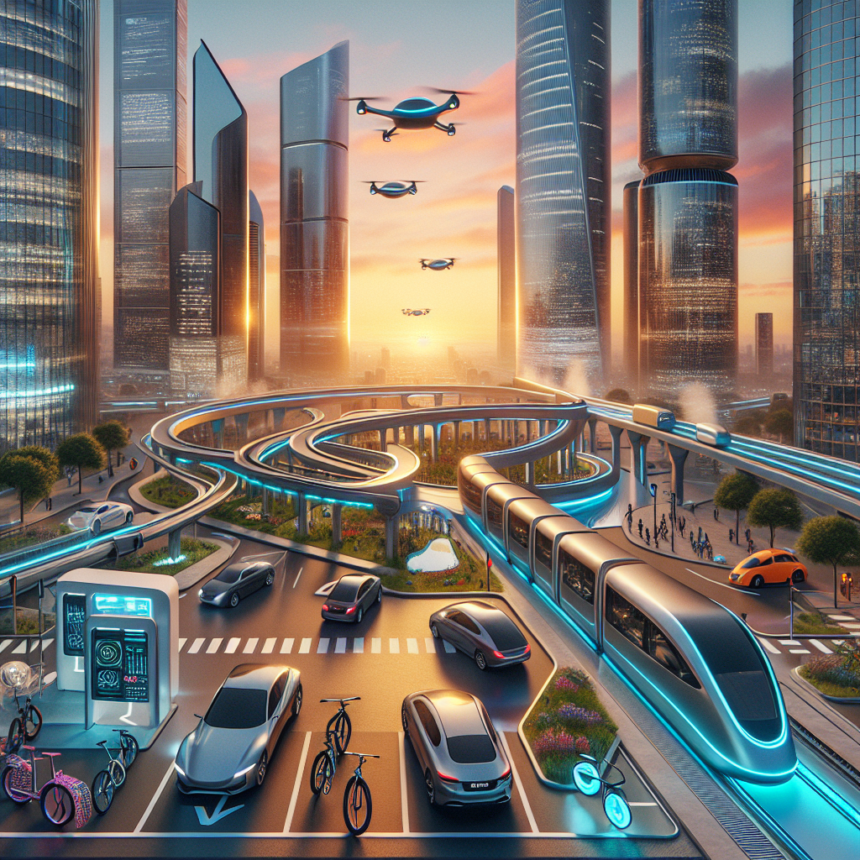Transportation is a backbone of society, influencing everything from economic growth to environmental sustainability. In recent years, we have witnessed a transformative era in transportation, driven by innovations that are reshaping how we move people and goods. The road ahead is paved with advancements in technology such as electric vehicles (EVs), autonomous driving, and smart infrastructure, which promise to make travel safer, faster, and more efficient.
The Electric Vehicle Revolution
The shift towards electric vehicles is one of the most significant trends in transportation. With growing concerns about climate change and fossil fuel dependency, automakers are investing heavily in EV technology. EVs produce zero tailpipe emissions, drastically reducing air pollutants in urban areas. According to the International Energy Agency (IEA), the number of electric cars on the road is expected to reach 145 million by 2030 if policies remain supportive.
Furthermore, innovations in battery technology have improved the range and efficiency of EVs, making them a more attractive option for consumers. Fast-charging infrastructure is also on the rise, with improvements in charging speed and reduced costs leading to a more convenient user experience. As more cities implement incentives for EV adoption, such as tax rebates and parking privileges, the landscape of personal and public transportation will continue to evolve.
Autonomous Vehicles: A Glimpse into the Future
Autonomous vehicles (AVs) represent another significant innovation in transportation. Companies like Waymo, Tesla, and Uber are actively developing self-driving cars that promise to enhance road safety and reduce traffic congestion. According to a report by McKinsey & Company, widespread adoption of AVs could save tens of thousands of lives annually by eliminating human error, which accounts for approximately 94% of all traffic accidents.
Moreover, AV technology stands to improve accessibility for people with disabilities and the elderly, ensuring that these groups can travel independently and safely. As regulatory frameworks evolve and public acceptance grows, the integration of AVs into daily traffic systems could lead to profound changes in urban planning and road infrastructure, primarily focused on accommodating these new vehicles.
Smart Transportation and Infrastructure
While vehicles are becoming smarter, the infrastructure supporting them is evolving as well. Smart transportation systems use data analytics and real-time information to optimize traffic flow, enhance public transit reliability, and reduce congestion. Cities are increasingly investing in intelligent traffic management systems that use sensors and AI-driven algorithms to manage traffic lights and wave patterns, leading to reduced wait times and smoother commutes.
Furthermore, the concept of Mobility as a Service (MaaS) is gaining traction, allowing users to plan and pay for multiple forms of transportation (bikes, public transit, rideshares) through a single app. This integrated approach promotes the use of public transportation and other eco-friendly transit options, further reducing reliance on personal vehicles.
Sustainable Transportation Solutions
As the global population grows and urbanization continues, sustainable transportation solutions have never been more critical. Innovations such as hyperloop technology, electric aviation, and green shipping practices are emerging to reduce carbon footprints and make transportation more efficient. For example, the hyperloop concept, which utilizes reduced pressure tubes, aims to transport passengers at speeds exceeding 700 miles per hour using renewable energy sources like solar power.
Similarly, advancements in electric aviation are aiming to create viable options for short-haul flights, minimizing aviation-related emissions. Electric or hybrid cargo ships are also being developed to significantly reduce pollution levels in coastal regions.
Conclusion
The advancements in transportation technology are shaping a future that promises to be cleaner, safer, and more accessible for everyone. As electric vehicles, autonomous systems, and smart infrastructure become integrated into our lives, we must remain aware of the challenges they present, such as cybersecurity risks and job displacement in traditional sectors. It is essential to foster collaboration between governments, businesses, and communities to ensure that these innovations benefit society as a whole.
FAQs
1. What is the primary benefit of electric vehicles (EVs)?
The primary benefit of EVs lies in their ability to produce zero tailpipe emissions, which significantly reduces air pollution and contributes to combating climate change.
2. How do autonomous vehicles improve road safety?
Autonomous vehicles reduce human error, which is responsible for the majority of traffic accidents. They use advanced sensors and AI to navigate safely, thus minimizing the risk of collisions.
3. What is Mobility as a Service (MaaS)?
MaaS is an integrated approach to transportation that combines various mobility services (public transportation, ridesharing, bike rentals) into a single accessible platform, enhancing the ease of travel for users.
4. What are some examples of smart infrastructure?
Examples of smart infrastructure include intelligent traffic management systems, real-time transit information displays, and integrated transport apps that optimize routes and reduce congestion.
5. How can we encourage the adoption of sustainable transportation?
We can encourage adoption by developing supportive policies (incentives for EV purchases), investing in renewable energy sources, and improving public awareness about the benefits of sustainable transportation options.










